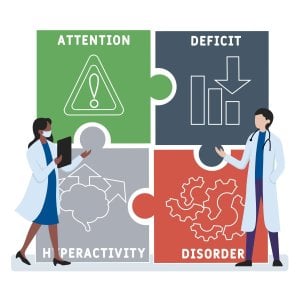From the Experts: ADHD AND ITS CONSEQUENCES
- Replies 4
This article was written for the SDC by psychologist and member @Jan A. Jan A. works part-time, taking on clients under the Medicare Mental Health Care Plans. She works with people of all ages, from children to seniors!
Attention Deficit Hyperactivity Disorder (ADHD) is one of the most misunderstood mental conditions. One myth about ADHD in children is that it is about failure to concentrate and that the child needs to try harder. Another myth is that it is all about bad behaviour and that the medication is designed to zone out the child so they behave better. The reality is that ADHD is caused by low levels of the chemical dopamine in the brain that affects a wide range of cognitive functions, leading to disadvantages in education and employment, damaged self-esteem, poor relationships, suicide attempts, accidents and drug use, which can lead to problems with the police.
The International Statistical Classification of Diseases and Related Health Problems 10th Revision (ICD-10), 2010, classifies ADHD as a behavioural and emotional disorder with onset usually occurring in childhood and sometimes in adolescence. The condition may resolve in the late teenage years but can continue into adulthood.
Most recent estimates propose that about 80% of people who have ADHD as a child continue to have it as an adult. It seems to occur more in boys, but girls can also have it. It is highly genetic, so if one person has it, it is likely to be found elsewhere in a family. Environmental factors, such as pollutants, may contribute. Maternal smoking, drinking or drug use may be involved, as well as premature birth. Head injuries can be a factor, and some specialists will require a brain scan before prescribing medications for ADHD.
There are three major types: inattentive, hyperactive/impulsive and combined. Traits of inattention include deficits in paying attention or focusing. This type tends to go unnoticed because they are quietly distracted, not interfering with others. Traits of the hyperactive/impulsive type include overly active behaviours that interfere with others. As they approach adulthood, the activity may lessen while the inattention remains. Traits of the combined type include both inattention and hyperactivity/impulsivity. This is the most frequently found type of ADHD. School reports for all types will generally include comments such as 'can do better', 'tends to be easily distracted', or 'has potential if they work harder'.
Lorem ipsum dolor sit amet, consectetur adipiscing elit. Quisque in diam id erat facilisis consectetur vitae vel urna.
Ut lacus libero, suscipit auctor ipsum sit amet, viverra pretium nisl. Nullam facilisis nec odio nec dapibus. Integer maximus risus et velit porttitor ullamcorper
Get your SDC Rewards membership now!
Become a member today and join over 200,000 Australians already taking advantage of daily news, weather, petrol costs, games, jokes, deals and more.
-
Sweepstakes (Big Cash Prize) - You’ll earn tickets for our monthly $1,000 grand prize draw.
-
Fewer ADS. We'll remove most of the annoying ads on the website as a token of our appreciation.
-
Priority updates. You'll be our number 1 priority when it comes to app updates
-
Weekly Rewards. SDC Rewards Members get access to exclusive weekly competitions
-
Exclusive content. You’ll receive exclusive updates from the team on a regular basis
-
Early access. That’s right, not only will you get priority access, but you’ll also get early access
-
Cancel at any time
-
All SDC Rewards membership benefits








